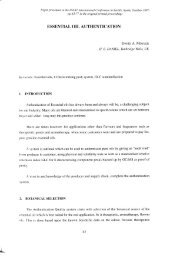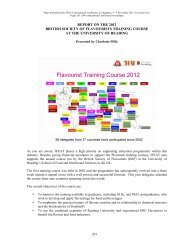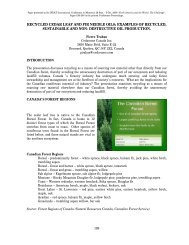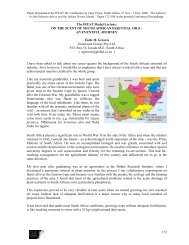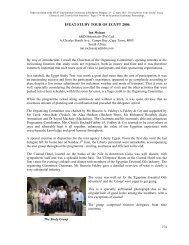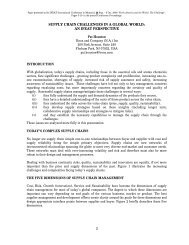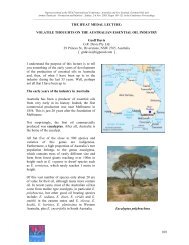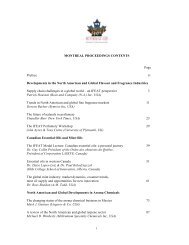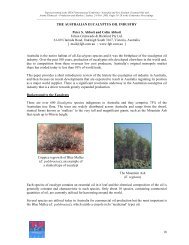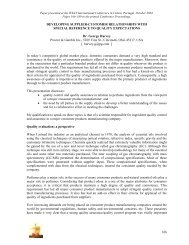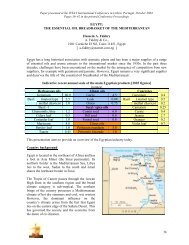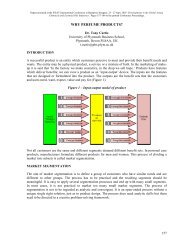Paper presented at the IFEAT Int. Conference in Cape Town
Paper presented at the IFEAT Int. Conference in Cape Town
Paper presented at the IFEAT Int. Conference in Cape Town
You also want an ePaper? Increase the reach of your titles
YUMPU automatically turns print PDFs into web optimized ePapers that Google loves.
The <strong>Cape</strong> Floral K<strong>in</strong>gdom, often also referred to as ‘Fynbos’ due to <strong>the</strong> f<strong>in</strong>e shrubby n<strong>at</strong>ure of most ofits ca. 8,700 species, ranges over a narrow band (~60km wide) along <strong>the</strong> South Western <strong>Cape</strong> coastl<strong>in</strong>efrom ~200km north of <strong>Cape</strong> <strong>Town</strong> to Port Elizabeth, ~700km to <strong>the</strong> east of <strong>Cape</strong> <strong>Town</strong>. In general‘Fynbos’ veget<strong>at</strong>ion is characterised by many low bushy shrub-like plants and few trees [2] .N<strong>at</strong>ural occurrenceTypical Fynbos scene The n<strong>at</strong>ural ranges for A. betul<strong>in</strong>a and A.crenul<strong>at</strong>a are, however, much smaller than <strong>the</strong>total <strong>Cape</strong> Floral K<strong>in</strong>gdom range and also aregeographically separ<strong>at</strong>ed:• N<strong>at</strong>ural A. betul<strong>in</strong>a occurs <strong>in</strong> mounta<strong>in</strong>ousregions from Gouda northwards to Piketberg,Aurora <strong>in</strong> <strong>the</strong> west to <strong>the</strong> Cederbergmounta<strong>in</strong>s nor<strong>the</strong>ast of Piketberg [3] .• A. crenul<strong>at</strong>a is found n<strong>at</strong>urally <strong>in</strong> an evensmaller area, rang<strong>in</strong>g from <strong>the</strong> HottentotsHolland mounta<strong>in</strong>s around Somerset-West <strong>in</strong><strong>the</strong> south to <strong>the</strong> mounta<strong>in</strong>s around Tulbagh,~100km to <strong>the</strong> north.• The n<strong>at</strong>ural occurrence of <strong>the</strong> third “species”,A. betul<strong>in</strong>a x crenul<strong>at</strong>a (or hybrid buchu), isrel<strong>at</strong>ively unclear.Two phenotypically <strong>in</strong>dist<strong>in</strong>guishable chemotypes of A. betul<strong>in</strong>a have been described [3] :• an isomenthone chemotype th<strong>at</strong> is ma<strong>in</strong>ly found <strong>in</strong> <strong>the</strong> wild <strong>in</strong> <strong>the</strong> Piketberg region, and• a diosphenol chemotype th<strong>at</strong> occurs n<strong>at</strong>urally only <strong>in</strong> <strong>the</strong> eastern portion of A. betul<strong>in</strong>a’srange, <strong>in</strong> <strong>the</strong> Cederberg mounta<strong>in</strong>s.The hybridThere is a school of thought th<strong>at</strong> ascribes <strong>the</strong> emergence of <strong>the</strong> hybrid, A. betul<strong>in</strong>a x crenul<strong>at</strong>a, to <strong>the</strong>plant<strong>in</strong>g of cultiv<strong>at</strong>ed A. betul<strong>in</strong>a and A. crenul<strong>at</strong>a plants <strong>in</strong> <strong>the</strong> same fields by early buchu farmers.Ano<strong>the</strong>r school of thought describes it not as a true hybrid species, but r<strong>at</strong>her as a unique popul<strong>at</strong>ion orchemotype of A. crenul<strong>at</strong>a (s<strong>in</strong>ce phenotypically, adult A. betul<strong>in</strong>a x crenul<strong>at</strong>a plants usually havemuch more <strong>in</strong> common with A. crenul<strong>at</strong>a than A. betul<strong>in</strong>a, and <strong>the</strong> chemistry of its essential oil is99



